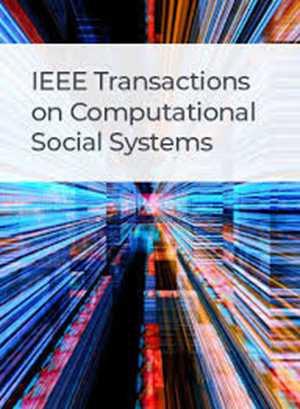RumorGraphXplainer: Do Structures Really Matter in Rumor Detection
IF 4.5
2区 计算机科学
Q1 COMPUTER SCIENCE, CYBERNETICS
IEEE Transactions on Computational Social Systems
Pub Date : 2024-04-05
DOI:10.1109/TCSS.2024.3378065
引用次数: 0
Abstract
The rise of social media has enabled individuals to rapidly share information, including rumors, which can have significant impacts on various domains. Traditional approaches to rumor control are impractical for social media platforms due to the volume and speed of information. Automated detection methods are needed that not only identify rumors early but also provide explanations for their decisions to protect free speech. Recent advancements in deep learning have shown promise in automating rumor detection. Graph-based models, such as bidirectional graph convolution network (Bi-GCN), capture propagation, and dispersion patterns to differentiate rumors from the truth. However, the interpretability of these deep learning models is a challenge. This article focuses on graph convolution networks (GCNs), which lack attention maps for easy model attribution but excel at capturing global structural features. We investigate the importance of graph structure in rumor detection using two GCN models on a real-world dataset, analyzing the learned latent propagation and dispersion features. To the best of our knowledge, this is the first study to explore GCNs in rumor detection and investigate the significance of graph structure in this task. Our research addresses three primary questions: 1) the primary contributors to GCN-based rumor detection models and their differences across models; 2) the importance of graph structure for accurate predictions in GCN-based models; and 3) the latent propagation and dispersion features learned by GCN-based detection models during the rumor detection process.RumorGraphXplainer:结构在谣言检测中真的很重要吗?
社交媒体的兴起使个人能够快速分享信息,包括对各个领域产生重大影响的谣言。由于信息量大、传播速度快,传统的谣言控制方法对于社交媒体平台来说并不实用。我们需要的自动检测方法不仅能及早识别谣言,还能为谣言的决定提供解释,以保护言论自由。最近在深度学习方面取得的进展显示了谣言自动检测的前景。基于图的模型,如双向图卷积网络(Bi-GCN),可以捕捉传播和分散模式,从而将谣言与真相区分开来。然而,这些深度学习模型的可解释性是一个挑战。本文的重点是图卷积网络(GCN),它缺乏便于模型归因的注意力图,但擅长捕捉全局结构特征。我们在真实世界的数据集上使用两个 GCN 模型研究了图结构在谣言检测中的重要性,并分析了学习到的潜在传播和分散特征。据我们所知,这是第一项在谣言检测中探索 GCN 并研究图结构在这项任务中的重要性的研究。我们的研究主要解决三个问题:1)基于 GCN 的谣言检测模型的主要贡献者及其在不同模型中的差异;2)基于 GCN 的模型中图结构对于准确预测的重要性;3)基于 GCN 的检测模型在谣言检测过程中学习到的潜在传播和分散特征。
本文章由计算机程序翻译,如有差异,请以英文原文为准。
求助全文
约1分钟内获得全文
求助全文
来源期刊

IEEE Transactions on Computational Social Systems
Social Sciences-Social Sciences (miscellaneous)
CiteScore
10.00
自引率
20.00%
发文量
316
期刊介绍:
IEEE Transactions on Computational Social Systems focuses on such topics as modeling, simulation, analysis and understanding of social systems from the quantitative and/or computational perspective. "Systems" include man-man, man-machine and machine-machine organizations and adversarial situations as well as social media structures and their dynamics. More specifically, the proposed transactions publishes articles on modeling the dynamics of social systems, methodologies for incorporating and representing socio-cultural and behavioral aspects in computational modeling, analysis of social system behavior and structure, and paradigms for social systems modeling and simulation. The journal also features articles on social network dynamics, social intelligence and cognition, social systems design and architectures, socio-cultural modeling and representation, and computational behavior modeling, and their applications.
 求助内容:
求助内容: 应助结果提醒方式:
应助结果提醒方式:


